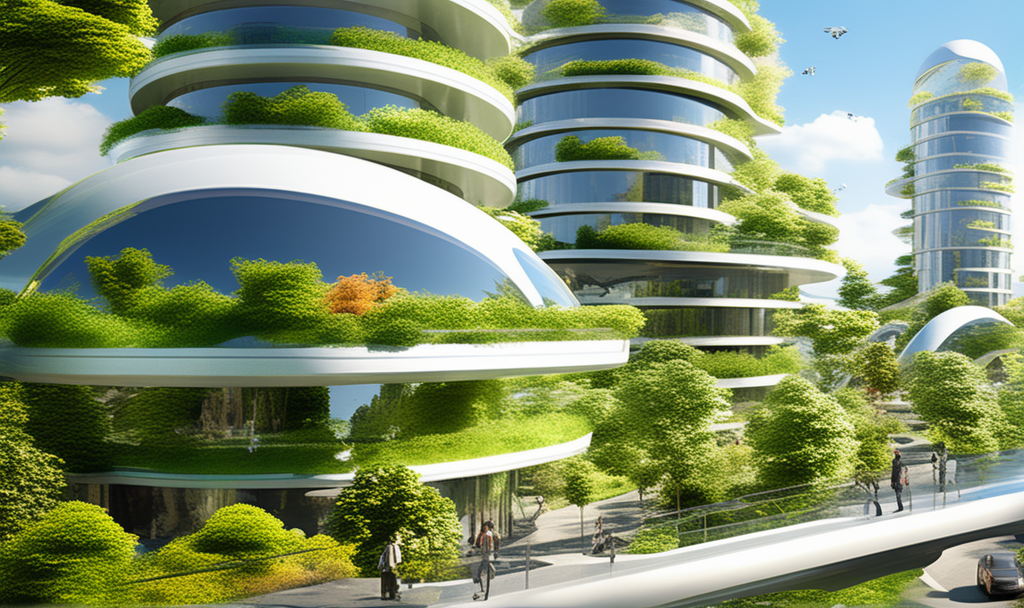Introduction:
Urban planning and architecture are dynamic fields that constantly evolve to meet the changing needs of society. As we step into the future, several trends are reshaping the way we design and organize our cities. From sustainable practices to technological advancements, the future of urban planning and architecture holds exciting possibilities that will redefine the way we live, work, and interact with our surroundings.
Sustainable Urban Planning: Paving the Way for Green Cities
Balancing Nature and Infrastructure
Sustainable urban planning is a cornerstone for future city development. Striking a harmonious balance between nature and infrastructure is crucial to creating green and eco-friendly cities. By incorporating green spaces, urban planners can mitigate the impact of urbanization on the environment and promote healthier, more sustainable living.
Smart Cities: A Technological Revolution
The integration of technology in urban planning is transforming cities into smart hubs. From smart transportation systems to efficient energy management, technology is enhancing the overall quality of urban life. Smart cities use data-driven insights to optimize resources, reduce waste, and enhance the overall efficiency of public services.
Inclusive and Human-Centric Design: Building for All
Designing for Diversity
In the future, urban planners and architects will prioritize inclusive design that caters to diverse populations. Creating spaces that are accessible to people of all abilities ensures that cities are welcoming and functional for everyone. Inclusive design fosters a sense of community and belonging, promoting social cohesion in urban environments.
Human-Centric Architecture: Enhancing Well-being
Architecture is shifting towards a more human-centric approach, focusing on enhancing the well-being of residents. Incorporating elements that promote physical and mental health, such as green roofs, natural lighting, and communal spaces, is becoming a priority. Future cities will be designed with the intention of improving the overall quality of life for their inhabitants.
Resilient Cities: Adapting to a Changing Climate
Climate-Resilient Infrastructure
As the impacts of climate change become more pronounced, urban planning must adapt to ensure the resilience of cities. Climate-resilient infrastructure, including flood-resistant buildings and sustainable drainage systems, will be integral to safeguarding urban areas from the challenges posed by a changing climate.
Adaptive Reuse: Breathing New Life into Old Structures
A key trend in future architecture is the concept of adaptive reuse. Instead of demolishing old structures, architects are repurposing existing buildings to meet new needs. This not only preserves the cultural heritage of a city but also reduces the environmental impact associated with new construction.
Connectivity and Mobility: Redefining the Urban Landscape
Integrated Transportation Systems
Efficient transportation is a cornerstone of well-functioning cities. Future urban planning will prioritize integrated transportation systems that seamlessly connect different modes of transit. From public transportation to cycling lanes and pedestrian-friendly streets, cities will be designed to reduce congestion and enhance mobility.
The Rise of Autonomous Vehicles
The advent of autonomous vehicles is set to revolutionize urban mobility. As self-driving cars become more prevalent, urban planners will need to reconsider road design and parking infrastructure. The integration of autonomous vehicles into city planning will lead to more efficient transportation networks and reduced traffic congestion.
If you have any question about this article, please contact us …
If you want you can know more about this through Cambridge dictionary.
Conclusion: Shaping a Sustainable and Inclusive Future
As we peer into the future of urban planning and architecture, it’s evident that sustainability, inclusivity, and adaptability will be the driving forces shaping our cities. By embracing innovative technologies, prioritizing human-centric design, and planning for resilience, we can create urban spaces that not only meet the needs of today but also adapt to the challenges and opportunities of tomorrow. The evolution of urban planning and architecture is a reflection of our commitment to building a better, more sustainable world for generations to come.

